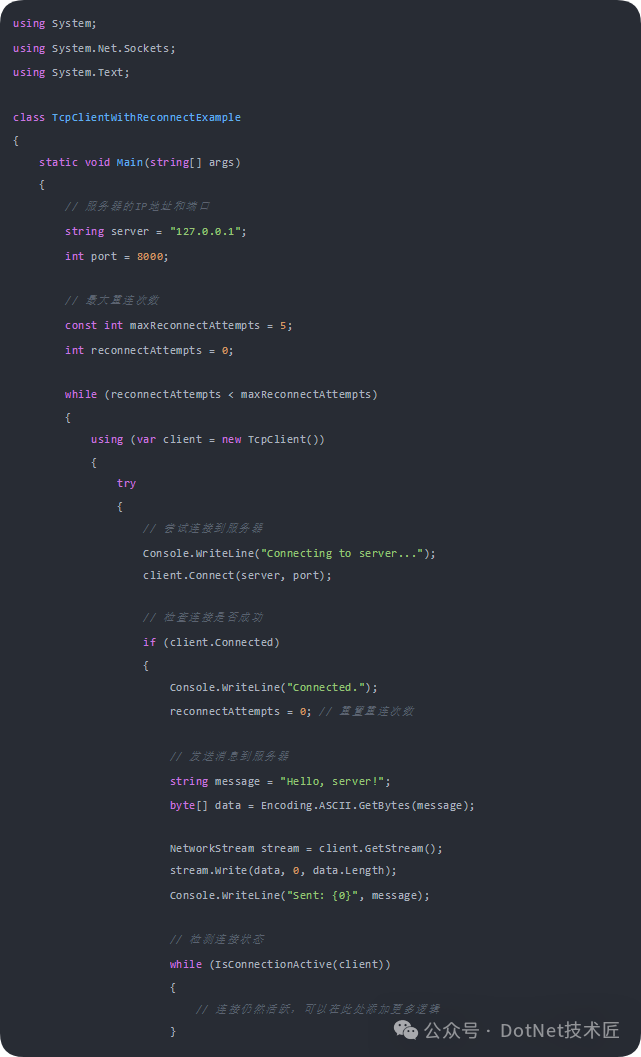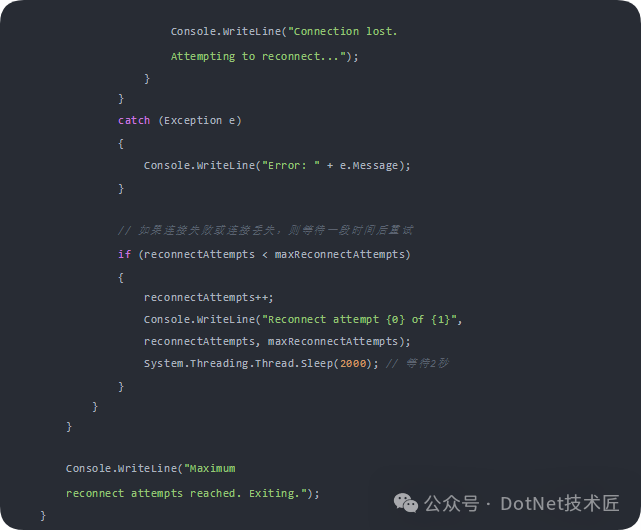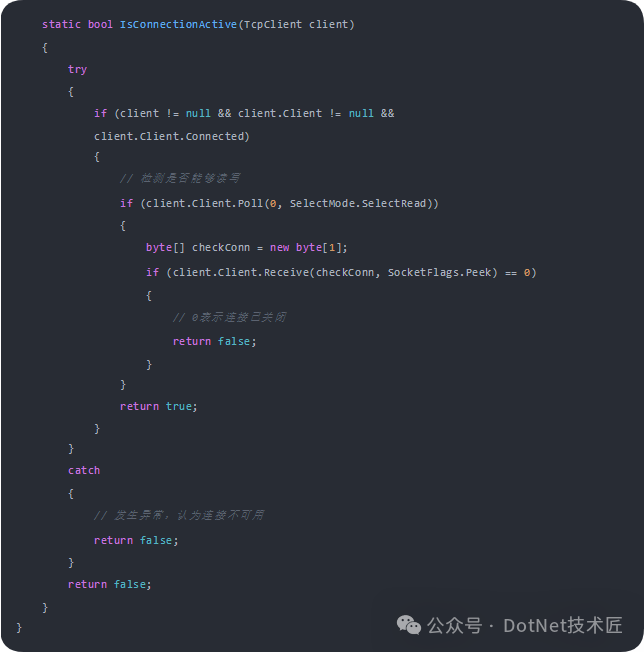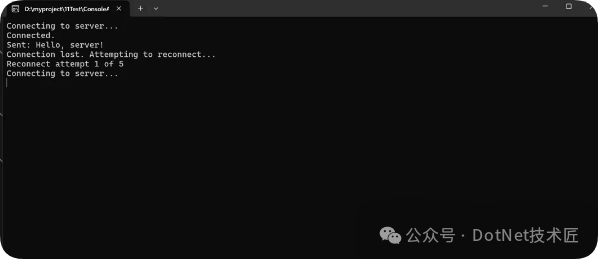Introduction
In the development of network applications, TCP/IP communication is fundamental for data transmission between clients and servers.
However, ensuring the stability and reliability of communication is equally important. When implementing TCP/IP communication in C#, it is necessary to focus not only on sending and receiving data but also on monitoring the connection status in real-time to promptly handle network interruptions or anomalies.
This article will detail how to efficiently implement TCP/IP communication using C# and provide a reliable method for detecting and managing connection status.
Introduction to TCP/IP
TCP/IP (Transmission Control Protocol/Internet Protocol) is a set of network communication protocols that define how data is transmitted over a network.
The TCP/IP protocol ensures reliable data transmission by dividing data into independent packets for sending and receiving.
Implementing a TCP Client in C#
In the .NET framework, the <span>System.Net.Sockets</span> namespace provides a series of classes for network communication, among which the <span>TcpClient</span> class is used to create a TCP client.
Below is a simple implementation of a TCP client that attempts to connect to a specified server and sends a message.



We used the <span>Socket.Poll</span> method and the <span>Socket.Receive</span> method to detect the connection status.
<span>Poll</span> method is used to check if there is readable data on the connection, while the <span>Receive</span> method (with the <span>SocketFlags.Peek</span> flag) attempts to read data without removing it from the network buffer.
If the <span>Receive</span> method returns 0, it means the peer has closed the connection.

We used a <span>while</span> loop to attempt reconnection until the maximum number of reconnect attempts <span>maxReconnectAttempts</span> is reached. Before each connection attempt, we create a new <span>TcpClient</span> instance to ensure it is a fresh connection attempt.
If the connection is successful, <span>reconnectAttempts</span> will be reset to 0. If the connection fails or is lost during the connection process, the value of <span>reconnectAttempts</span> will be incremented, and a reconnection attempt will be made after 2 seconds.
Note that the reconnection strategy (such as the number of reconnection attempts, wait time, etc.) may need to be adjusted based on the actual application requirements. Additionally, attempting to reconnect frequently or for extended periods may put extra pressure on the server, so careful consideration should be given when designing the reconnection logic.
Conclusion
Through the System.Net.Sockets namespace in C#, we can easily create and manage a TCP client. With the classes in this namespace, we can efficiently establish and maintain TCP connections, as well as gain a more accurate understanding of the real-time status of the connection through additional detection methods.
This article will help you understand and implement TCP/IP-based network communication functions, including how to use heartbeat mechanisms and other techniques to ensure the stability and reliability of connections. I hope this content provides valuable references and practical tips for your projects.
Author: Technical Old Kid